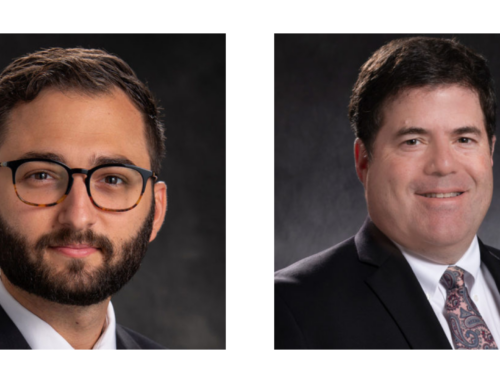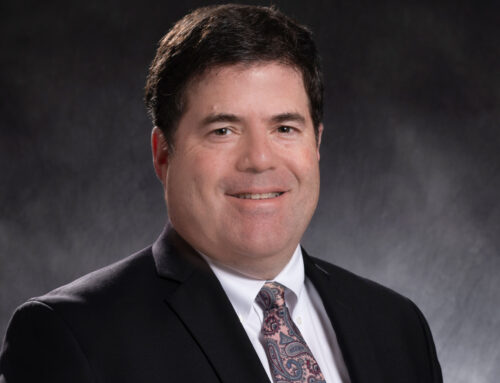By: Scott Borsack
- Who is eligible for Paycheck Protection loans? Generally employers with fewer than 500 employees, independent contractors and certain not for profit entities are eligible for a Paycheck Protection loan. There are provisions that allow employers with multiple locations to consider each location as a separate eligible borrower.
- Is there a loan limit and if so how is it applied? Each eligible borrower is subject to a loan limitation of $10 MM by location. A loan can be made in the amount of 2.5 times the average monthly payroll cost for the applicant as experienced prior to the pandemic.
- How do the loan forgiveness provisions operate? Following the origination of a loan, the employer has 8 weeks to spend the funds on payroll costs, mortgage interest on business property, rent and utility charges. So long as the funds are expended by June 30, 2020 the borrower is generally eligible for loan forgiveness.
- What if I do not spend the funds during the 8 week period following the loan or still have funds remaining after June 30, 2020? If borrowed funds are not expended on qualified expenditures on or before June 30, 2020 or not within the 8 week period starting on loan origination, the portion not timely spent on eligible expenses would have to be repaid according to the terms of the loan.
- I understand that I can borrow 2.5 times my payroll costs. Over what period is that determined? The loan amount is determined with reference to your historic average monthly payroll during the one year period ending on the date which the loan is made. An employer with a seasonal payroll can use one of two shorter 12 week periods, one that starts on February 15, 2019 and another March 1, 2019.
- What payroll costs are included in the 2.5x calculation? For purposes of determining the base to which the multiplier is applied, costs for salary, wages, commissions, cash tips or the equivalent, payment for vacation, parental, family, medical or sick leave, allowance for dismissal or separation, payment for health care payments, payment of retirement benefits, state or local tax assessed on the compensation are all considered eligible for consideration.
- There appear to be exceptions around individuals who make more than $100,000 annually. How is that exception applied? Compensation paid to individuals who make more than $100,000 annually, as well as those individual employees are treated differently. First, for purposes of determining the payroll cost of the employer to calculate the maximum amount of the loan, the portion of monthly compensation paid to an individual that would result in the employee receiving more than $100,000 annually is excluded from consideration. Likewise you cannot use the paycheck loan to pay an employee compensation in an amount on a weekly basis which if annualized would result in the employee receiving more than $100,000 in compensation. Second, for purposes of determining the reduction in loan forgiveness on account of a reduction in wages paid, employees who make more than $100,000 a year are not considered. Finally, for purposes of computing a reduction in head count or workforce, all employees, including those who were paid more than $100,000 are considered.
- If we hire a new individual who on an annualized basis will make more than $100K but during the covered period makes less than $100K will their payroll be included in the 2.5x? Income is viewed on an annual basis. An employee who is paid $2,000 a week will be paid $104,000 a year (assuming a 52 week year). The portion of weekly payroll which contributes to the excess is not included in the base for purposes of computing the maximum loan, and cannot qualify as an expense entitling the employer to forgiveness.
- How is the reduction in loan forgiveness calculated? There are two means by which expenses otherwise eligible for forgiveness can be reduced. If the number of full time equivalents prior to the loan is greater than the number of full time equivalents after the loan, forgiveness will be reduced by the same percentage as the reduction in force. For this purpose, employees paid more than $100,000 a year are not considered. Full time equivalents are defined as individuals who work for 30 hours or more a week. Part timers can be aggregated to form a single full time equivalent. In addition, eligible expenses can be reduced by the reductions in payroll costs attributable to each employee when comparing the pre-pandemic period to the period after the loan is originated. For this purpose, a reduction of more than 25% will reduce expenses eligible for forgiveness on a dollar for dollar basis. Effectively, an employer could reduce payroll to an employee by 25% before any adverse impact on the amount of potential forgiveness. Here too we do not consider employees whose wages on an annual basis are more than $100,000.
- Do we look to total payroll, or instead is the focus on individual payroll? When calculating the potential for reducing the amount of expenditures eligible for forgiveness, individual employee payroll is reviewed, comparing the payroll costs of each employee prior to the pandemic as compared to payroll after the pandemic. Aggregate payroll costs for all employees is not the point of focus.
- What if we had half the number of employees after the loan but doubled their salary. How would that affect the forgiveness? This question requires two separate points of analysis. Since there are half the number of employees after the loan as there were prior to the pandemic, eligible expenses should be reduced by half. Further, half the workforce is no longer employed so their lost wages would also reduce the amount of eligible expenses. Without specific facts it is difficult to project a result, but as an intellectual exercise it seems that substantially all of the otherwise eligible expenses would not be available for forgiveness.
- Does the calculation consider who is actually employed or is head count the most important consideration? As noted in the prior question, there are two calculations, one of which considers the compensation paid to each individual employee and another that looks to the total size of the workforce. The headcount or size of the work force is not personal to any employee; instead we look to full time equivalents, regardless of the identity of those workers. The other, which measures employee wages is personal to each employee and there we consider actual wages paid to each employee. So long as each employee receives compensation at the rate of no less than 75% of the wages paid prior to the loan, there is no problem. If post loan wages paid to each individual employee is not at least 75% of the prior rate, the shortfall to the 75% level reduces the amount of expenditures eligible for forgiveness.
- Does this calculation exclude new hires who on an annualized basis make more than $100K but during the covered period make less than $100K? For purposes of determining a reduction in force, it does not matter what an employee is paid. The only issue in the reduction in force calculation is a comparison of full time equivalents. Those employees who receive more or less compensation but continue to work full time are still considered full time equivalents. Their individual salary experiences can impact on the amount eligible for forgiveness.
- Does payroll cost include sick, vacation, and PTO time? Any payroll cost is included, so payment of sick, vacation or PTO is considered as payroll costs.
- What is the mechanism for receiving the 2.5x loan and how quickly will it be available? This is a bit of an unknown right now. The Act contemplates that both the SBA and commercial lenders participating in the SBA program will be able to make these loans. It is anticipated that there will be millions of such loans applied for. The SBA is presently working on policy guidance and is revising its website for processing loans directly to the SBA. We anticipate that once the SBA releases its policy statements and procedures, commercial lenders will engage in the program as there are financial incentives to commercial lenders for their participation.
Scott Borsack is a business attorney and partner in the Lawrenceville, NJ law firm of Szaferman, Lakind. He can be reached at 609-275-0400 or via email at sborsack@szaferman.com.
For more COVID-19 related resources and articles visit our COVID-19 Resource Center.
The foregoing is intended for general information purposes and is no substitute for specific legal advice.






